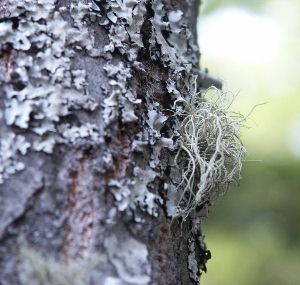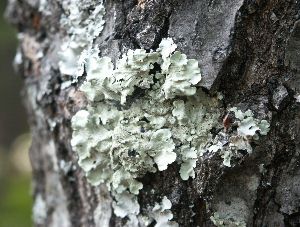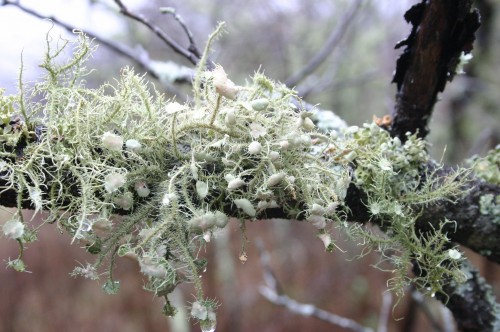





Every kid (and most adults) can remember being falsely blamed simply because they were standing nearby when an accident happened. Although accidents do seem to happen more often when kids are present, it’s erroneous to assume that they are the sole cause of a mishap.
R. M. may be guilty of making false assumptions. He recently wrote “I have heard conflicting views on whether or not lichens harm the trees they grow on. I live in Highlands NC and have lichens on several firs and hardwoods. The trees are sickly looking and over time have died. If lichens are harmful how can I treat my trees?”
Lichens are the poster children for “I didn’t do it – I was only standing there!”
SYMBIOTIC Lichens are in fact a symbiotic relationship between an algae and a fungus. The algae photosynthesizes in bright light and feeds the fungus, which wraps around the algae to protect it from drying.
DIFFERENT SHAPES Lichens grow in many different shapes, depending on which fungi and algae associate themselves together. Foliose lichens resemble gray tree leaves. Fruticose lichens are composed of many small threads, giving them a shrubby appearance. Crustose lichens are crusty, adhering tightly to a plant’s bark.
NOT HARMFUL Since lichens are almost always found on weak plants, do lichens cause the plants to become sick? In fact, lichens are totally harmless and in no way responsible for the poor state of any tree or shrub. They are simply indicators of the infirm health of the plant. As a woody plant loses vigor, the number and size of its leaves gradually decrease. This allows more sunlight on the trunk and lower branches. As soon as enough light is available on the bark, lichens begin to colonize it.
If lichens are unsightly to you, the best way to reduce their numbers is to increase the health of the plant. Old azaleas can be severely pruned in February in order to bring on new limbs and a dense leaf cover. Examine the soil and the area around larger trees for obvious environmental problems. Are they getting enough water in summer? Is the tree declining because it is planted where water accumulates? Have nearby trees grown so tall as to shade your tree? There might be little light for tree leaves but plenty for lichens.
Lichens can be brushed off the plant with a stiff brush. However, unless the true cause of decline is corrected, lichens will reappear. If a plant is helped to become more healthy, less sunlight will strike the limbs and trunk. Lichens will then gradually become smaller.
Broken lamps, stepped-on flowers and sofa spills might initially look like the handiwork of close by children. Any parent knows, though, that the damage might not always be their child’s fault. Unlikely as it appears, lichens are blameless when it comes to plant decline.



Copyright © www.100flowers.win Botanic Garden All Rights Reserved